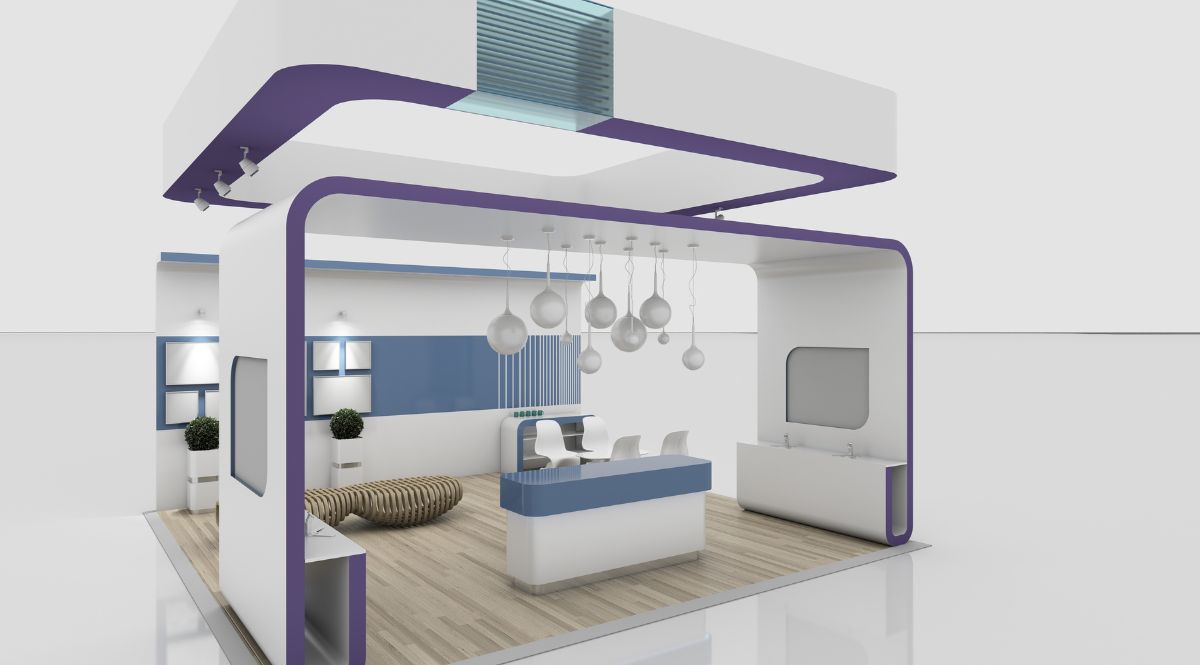Crafting Excellence: Choosing the Ideal Materials for Your Exhibition Stand

In the dynamic world of trade shows and expos, your exhibition stand is more than just a booth—it’s your brand’s stage, your first impression, and your silent salesperson. As an experienced exhibition stand builder, we understand that the materials you choose play a crucial role in creating a stand that not only catches the eye but also withstands the test of time and aligns with your sustainability goals. In this comprehensive guide, we’ll explore how to select the best materials for your expo stand design, balancing durability, aesthetics, and environmental responsibility.
The Importance of Material Selection in Exhibition Stand Design
Before we dive into specific materials, let’s consider why your choice of materials matters:
- Durability: Your stand needs to withstand the rigors of transport, assembly, disassembly, and repeated use.
- Aesthetics: The right materials can elevate your stand’s visual appeal and reinforce your brand image.
- Sustainability: With growing environmental concerns, eco-friendly materials can boost your brand’s reputation.
- Functionality: Different materials offer various features that can enhance your stand’s performance.
- Cost-effectiveness: Balancing quality and budget is crucial for long-term success.
Now, let’s explore some popular materials used in exhibition displays and their pros and cons.
Aluminum: The Lightweight Champion
Pros:
- Extremely lightweight, making it easy to transport and assemble
- Highly durable and resistant to corrosion
- Versatile and can be shaped into various forms
- Recyclable, contributing to sustainability efforts
Cons:
- Can be more expensive than some alternatives
- May require specialized skills for complex designs
As an exhibition stand contractor, we often recommend aluminum for its excellent strength-to-weight ratio. It’s particularly suitable for modular designs that need to be assembled and disassembled frequently.
Wood: The Timeless Classic
Pros:
- Offers a warm, natural aesthetic
- Highly customizable and easy to work with
- Can be sourced sustainably (look for FSC-certified wood)
- Provides good insulation properties
Cons:
- Heavier than aluminium, which can increase transport costs
- May require more maintenance to prevent wear and tear
- Susceptible to moisture damage if not properly treated
Wood remains a popular choice for stands that aim to create a cozy, inviting atmosphere. It’s especially effective for brands that want to emphasize craftsmanship or natural products.
Fabric: The Versatile Performer
Pros:
- Extremely lightweight and easy to transport
- Offers endless possibilities for graphics and branding
- Can be easily cleaned and is often reusable
- Provides excellent sound absorption properties
Cons:
- May wrinkle or sag if not properly tensioned
- Less durable than hard materials for long-term use
- Can be challenging to achieve a high-end look without proper design
Fabric is increasingly popular in modern expo stand design, particularly for large-format graphics and creating flowing, organic shapes.
Composites: The Innovative Solution
Pros:
- Combines the benefits of multiple materials
- Can be engineered for specific properties (e.g., strength, weight, appearance)
- Often more durable than single-material options
- Can incorporate recycled materials for sustainability
Cons:
- May be more expensive than traditional materials
- Can be complex to work with, requiring specialized knowledge
Composite materials are at the forefront of innovation in exhibition stand construction, offering unique possibilities for cutting-edge designs.
Plastic: The Versatile Option
Pros:
- Lightweight and easy to mould into various shapes
- Can be very cost-effective
- Available in a wide range of colours and finishes
- Some plastics are recyclable or made from recycled materials
Cons:
- May not convey a premium image unless high-quality options are used
- Some types of plastic are not environmentally friendly
- Can scratch or show wear more easily than harder materials
Plastics can be an excellent choice for certain components of your stand, especially for temporary or budget-conscious projects.
Making the Right Choice for Your Exhibition Stand
When selecting materials for your exhibition stand, consider the following factors:
- Brand Image: Choose materials that align with your brand’s values and aesthetic.
- Event Duration: For longer events, prioritize durability; for shorter ones, you might opt for more cost-effective solutions.
- Frequency of Use: If you attend multiple events, invest in materials that can withstand repeated assembly and disassembly.
- Transportation Requirements: Consider the weight and packing size of materials if you’ll be shipping your stand frequently.
- Budget: Balance initial costs with long-term value and reusability.
- Sustainability Goals: If eco-friendliness is a priority, look for recycled, recyclable, or biodegradable options.
The Role of Your Exhibition Stand Builder
Choosing the right materials is a critical decision that can significantly impact the success of your exhibition presence. That’s why partnering with an experienced exhibition stand contractor is invaluable. A skilled expo stand design team can help you navigate the pros and cons of different materials, ensuring that your final stand not only looks impressive but also meets your practical needs and budget constraints.
Remember, the best exhibition stands are those that seamlessly blend form and function. By carefully selecting your materials and working with a knowledgeable exhibition stand builder, you can create a stand that not only turns heads but also serves as an effective marketing tool for your brand.
In conclusion, whether you opt for the sleek modernity of aluminium, the warmth of wood, the versatility of fabric, or a combination of materials, your choice should reflect your brand’s unique identity and meet the specific demands of your exhibition strategy. With the right materials and expert guidance, your exhibition stand will stand out from the crowd and help you achieve your event marketing goals.







